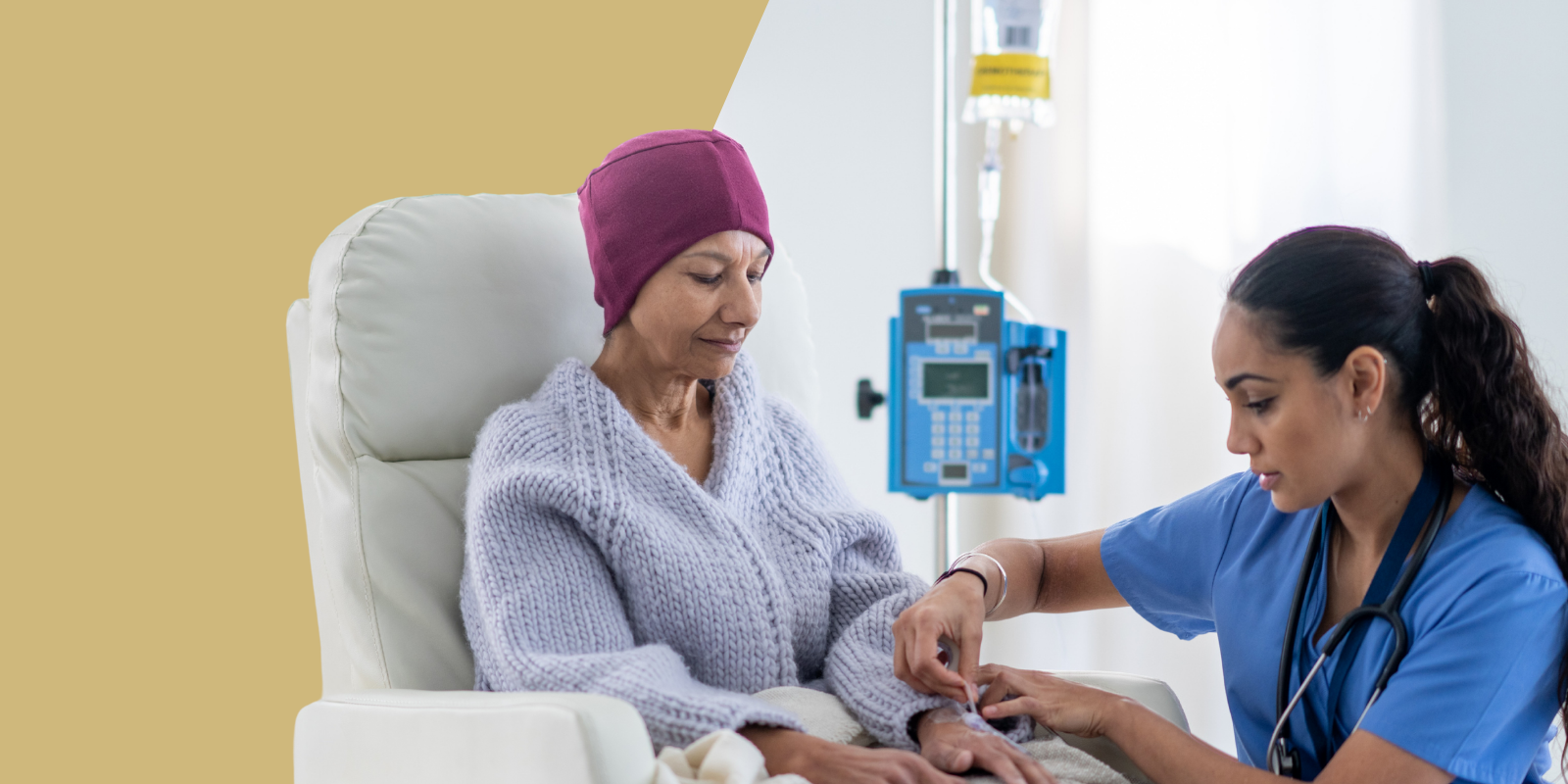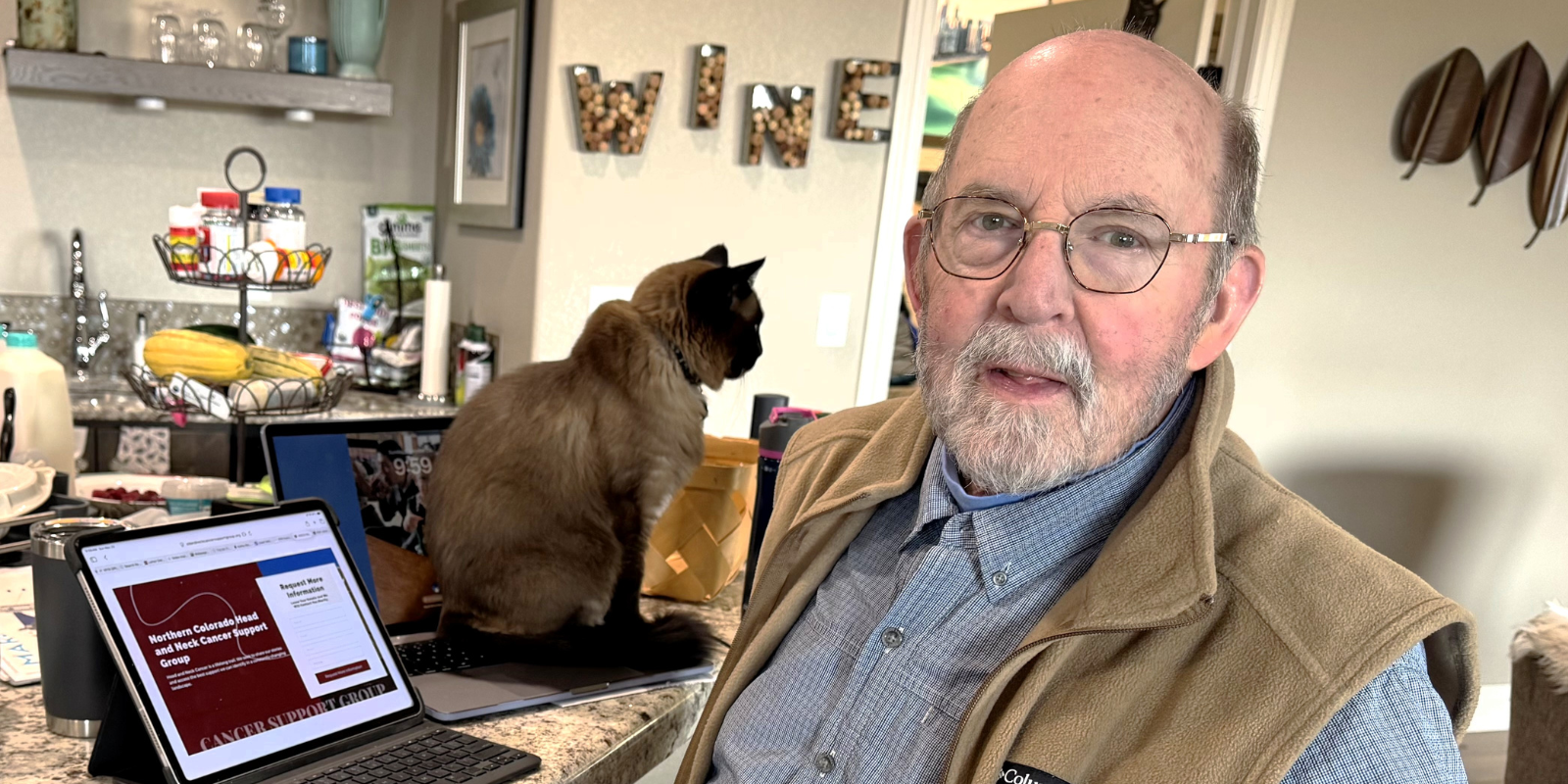About one in five people worldwide will develop cancer in their lifetimes and in 2020, the most recent year for which data are available, cancer accounted for nearly 10 million deaths worldwide.
Cancer is a leading cause of death worldwide. However, according to the World Bank and World Health Organization, at least half the world’s population can’t access essential health services, including cancer screening and risk reduction services.
Today is World Cancer Day, and the University of Colorado Cancer Center emphasizes a continuing commitment to partnering with stakeholders locally, nationally, and internationally in closing the cancer care gap.
“I think the Cancer Center is doing a lot of things really well and its members are committed to being as innovative as possible to make sure that treatments are accessible to everyone who needs them,” says Cathy Bradley, PhD, MPA, deputy director of the CU Cancer Center. “We’ve built this into a center where patients can come to one place – and not have to coordinate with several facilities, not have to take multiple days off work – and get all of their care here.”
Working to close the gap
The CU Cancer Center was founded in 1985 with the mission to unite its community to overcome cancer through innovation, discovery, prevention, early detection, multidisciplinary care, and education. It is the only National Cancer Institute-designated Comprehensive Cancer Center in Colorado. The “comprehensive” designation recognizes the center’s strengths in research, as well as leadership and resources devoted to community outreach and engagement and cancer research training and education.
Among the efforts that CU Cancer Center clinicians, researchers, and staff are making to help close the care gap are:
Continuing to grow a multidisciplinary approach to cancer treatment
Our multidisciplinary approach unites experts from many disciplines and specialties in one team to treat a patient’s cancer.
“This benefits patients in a lot of ways,” Bradley says. “The information is shared rather than siloed, so you have a lot of specialists in one room working together on each patient’s treatment plan. And in terms of closing the care gap, if you think about somebody who’s working, who maybe doesn’t have paid sick leave, being able to come to one place and work with one team can decrease their financial burden, it can help with concerns about transportation or childcare or time away from work if you’re coming to one place.”
→ Learn more about how multidisciplinary care helped Amanda Vegter through her breast cancer journey
Enrolling people from traditionally underrepresented communities in clinical trials
The CU Cancer Center has investigators who are interested in closing the care gap, and who are aware of the need to address longstanding disparities in who joins clinical trials.
“We’re working to make sure treatment is widely available to everyone, and that may mean things like providing interpreters, supporting community partners in providing transportation, and supporting research that addresses needs in the Cancer Center’s catchment area,” Bradley says.
“It doesn’t matter what you discover in the labs if a patient can’t afford it. You could cure cancer, but if the only way someone can access the treatment is to go bankrupt, then a lot of people may not choose that. So, these are discussions we need to continue having at the legislative level, as an institution, and in the clinic.”
Sharing innovations that originate in CU Cancer Center labs and clinics with local, national, and global partners
“We not only want to be on the leading edge of research and treatment, but to export those methods to other places,” Bradley says. “We want to continue showing that our research has translational applications and being part of the national and international discussion on how we make these treatments accessible to everyone.”
This is done by our researcher collaborating with other institutes, joining, and creating organizations with researchers in similar specialty areas, and presenting our work at conferences and in published papers.
Other CU Cancer Center efforts to close the care gap include:
HPV Education and Patient Navigation Project Seeks to Raise Awareness of Need for HPV Vaccine
A central issue in the fight against cervical cancer is that more than 99 percent of cervical cancers are due to human papillomavirus (HPV) and there’s an HPV vaccine. Approved by the Centers for Disease Control in 2006, the vaccine is recommended for girls and boys at age 11-12, though it can be administered as young as 9 and up to age 45.
An ongoing HPV Education and Patient Navigation Project by the CU Cancer Center Office of Community Outreach and Engagement (COE) is focused on helping parents of adolescents and young adults to make informed decisions about the HPV vaccine.
Rising Star Position Will Support Health Disparities and Shared Decision-Making Research
Pursuing educational and community-building opportunities aligned with research will be a focus for Channing Tate, PhD, an assistant professor of internal medicine in the CU School of Medicine, as she steps into the Rising Star in Cancer Prevention and Control (CPC) mentored member position with the CU Cancer Center.
A goal of the Rising Star positions is to support researchers from traditionally underrepresented populations in each of the Cancer Center’s four research programs. These opportunities will support up-and-coming researchers who are doing groundbreaking work, with funding directed toward ensuring that the CU Cancer Center is competitive with larger cancer centers and able to retain top future cancer leaders in Colorado.
Recognizing Health Disparities During National Minority Cancer Awareness Month
April has been designated National Minority Cancer Awareness Month to bring attention to the health disparities that lead to higher rates of cancer in Black, Hispanic, American Indian/Alaskan Native, and other communities of color.
Some of these disparities are due to genetics, but most are attributable to social determinants of health that make education, screening, and treatment of cancer less accessible to Black and Hispanic populations.
Investigating the Connections Between Medicaid and Cancer Survival
In recent research published in the journal Cancer Epidemiology, Biomarkers & Prevention, Cathy Bradley, PhD, deputy director of the CU Cancer Center, shows that cancer patients who were insured by Medicaid prior to diagnosis do about as well as people with private insurance.
“Ultimately, the message is that having continuous coverage in order to be able to get access to screening and care prevents late-stage disease and high mortality,” she says.
Emphasizing The Importance of Patient Navigation
A cancer diagnosis can be difficult to work through in the best of circumstances, but factor in barriers related to language, insurance status, educational achievement, geographic location, income level, and more, and the cancer journey — everything from prevention and screening to diagnosis and treatment — can become nearly impossible to traverse.
Enter the patient navigator — a specially trained health worker who offers individualized assistance to patients, families, and caregivers negatively affected by health disparities to facilitate timely access to quality health and psychosocial care.
Research Shows Low Patient Comprehension of Terms Commonly Found in Electronic Health Information
An aim of the 21st Century Cures Act is to reduce barriers to patients’ timely access to electronic health information, and previous research has shown that patients sometimes access reports even before clinicians. An ongoing concern, however, is that pathology and radiology reports are written with the clinician, rather than the patient, as the intended audience.
Based on surveys of patients to assess comprehension of breast pathology report terminology, recently published research demonstrates poor patient understanding of terminology and a pressing need to develop and integrate educational tools to support patients.
Six undergraduate students participated in the 10-week American Cancer Society Diversity in Cancer Research (DICR) internship program at the CU Cancer Center. DICR is an American Cancer Society (ACS) program that aims to support students from traditionally underrepresented minorities in cancer research and mentorship.
PIKE-PREP Supports Scholars from Underrepresented Backgrounds in Pursuing Top-Tier Education
The first cohort in the one-year Preparation in Interdisciplinary Knowledge to Excel – Post-Baccalaureate Research Education Program (PIKE-PREP) is currently pursuing research interests with CU Cancer Center mentors. The program, which was established within the CU Cancer Center, offers a multi-dimensional mentoring and research training experience to help prepare post-baccalaureate students from underrepresented communities to enroll and succeed in a top-tier PhD or MD/PhD program and commit to a career in biomedical research.
Women Are Gaining Increasing Seats at the Table in Cancer Leadership
As women increasingly pursue careers in cancer treatment and research, they bring not only vital insight and perspective that are helping to drive innovation, but ongoing attention to longstanding gender disparities in the field. These disparities have long existed not just in the clinic and the laboratory, but in cancer leadership roles as well.
The CU Cancer Center is unique among many cancer centers nationwide because women represent half of its leadership in administration and research.
Community Partnerships Support New Endoscopy Suite at Longmont Salud Family Health
A newly opened endoscopy suite at Salud Family Health in Longmont highlights the importance of longstanding partnerships between the CU Cancer Center and community stakeholders in supporting underserved populations who otherwise might not receive vital cancer screening services.
The Colorado Cancer Screening Program (CCSP), directed through the CU Cancer Center and partially funded by the Cancer, Cardiovascular, and Chronic Pulmonary Disease Grants Program, has partnered with Salud Family Health Centers for almost 20 years. With more than $1 million in financial support, the CU Cancer Center has invested in patient navigation, transportation assistance, eldercare and childcare, endoscopy equipment, and other initiatives serving low-income, underinsured, and uninsured populations.
The MDC/Richmond American Homes Foundation and Cancer League of Colorado are matching donations for World Cancer Day up to $50,000.













